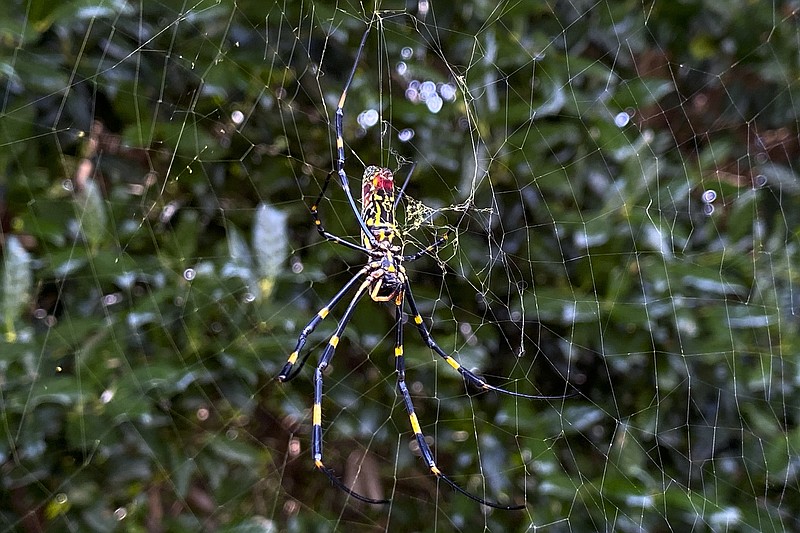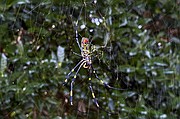A newcomer spider is spreading rapidly in the Southeastern United States, and Southern Adventist University researchers in Collegedale, Tennessee, want to know how it might affect the area's native wildlife.
The jorō spider, a colorful species originating from East Asia, has become the elusive subject of a research team that includes David Nelsen, a biology professor at Southern. The researchers are asking for residents in communities throughout Tennessee, Georgia and South Carolina to be on the lookout for the arachnid and report any sightings, according to a news release.
"More eyes in the field will contribute immensely to our research efforts and results," Nelsen said in the release. "Anybody can be a scientist in this case, and photographs can give us strong data for tracking and measuring this ongoing invasion."
Several professors working in the Southeast formed the research team in 2020 to study the spider's locations, rate of spreading and its effect on native spiders and other species. They represent various institutions, including Clayton State University in Georgia, Clemson University in South Carolina and the University of Tennessee, in addition to Southern.
(READ MORE: Joro spider is big, but fear not, says UGA researcher)
In 2021, there were four sightings of the yellow, red and silver-blue arachnid in the Chattanooga area, including one on Southern's campus. In 2022, sightings increased to about 20, along with the presence of males, which suggests a stable breeding population, the release states.
The jorō spider was accidentally introduced in 2014 – likely via a container ship from East Asia to Atlanta – and began spreading across Georgia and into the neighboring Carolinas, as well as parts of Tennessee and Oklahoma. There were no solid population estimates of it in the U.S. as of March 2022, according to National Geographic.
The jorōs, scientifically known as Trichonephila clavata, are known for highly organized, three-dimensional, wheel-shaped webs of gold silk. The spiders use a "ballooning" technique by creating a special silk to "hitch a ride" and float on air currents to move into new territories, according to Nelsen. They are large spiders and can measure 3 inches across with legs fully extended and survive brief freezes due to a high metabolism and heart rate.
The long-legged, teal-striped females typically weave webs several feet wide across trees and porches, which, combined with their large bodies, make them hard to miss. Despite the females' startling colors and size (males are smaller and brown) the spiders are harmless to humans, with fangs too short to break the skin. Like many orb-weavers, jorōs are also passive hunters, waiting for insects to get caught in their nets, National Geographic reported.
(READ MORE: Asian spider takes hold in Georgia, sends humans scurrying)
In Japanese mythology, the species is considered a deceptive shape-shifter that preys on young, handsome men – hence its name jorō-gumo, which means "binding bride" or "whore spider." In Korea, the arachnid's name is mudang gumi, which translates to "shaman" or "fortune-teller" spider.
State agricultural agencies do not recommend killing the arachnid on sight, as it's still unclear what threat, if any, the spiders may pose to native spiders or other species. The jorō could actually provide some benefit if it can eat agricultural pests, as there have been some observations of the jorō eating brown marmorated stink bugs, another non-native insect, according to National Geographic.
Nelsen has involved Southern's ecology students in the research by incorporating the project into labs and educational outreach.
"Research brings what the students are studying to life," Nelsen said in the release. "This work helps students answer the questions: 'How do I take what I'm doing as a biologist and give back to the community? How do I get people excited about the wonders of God's creation?'"
The project will likely continue for several more years in order to determine whether the arachnid newcomer is harming native species. If you spot what appears to be a jorō spider, email Nelsen at dnelsen@southern.edu and include a photo. You can also upload photos to the iNaturalist app or website.
– Compiled by Kim Sebring

